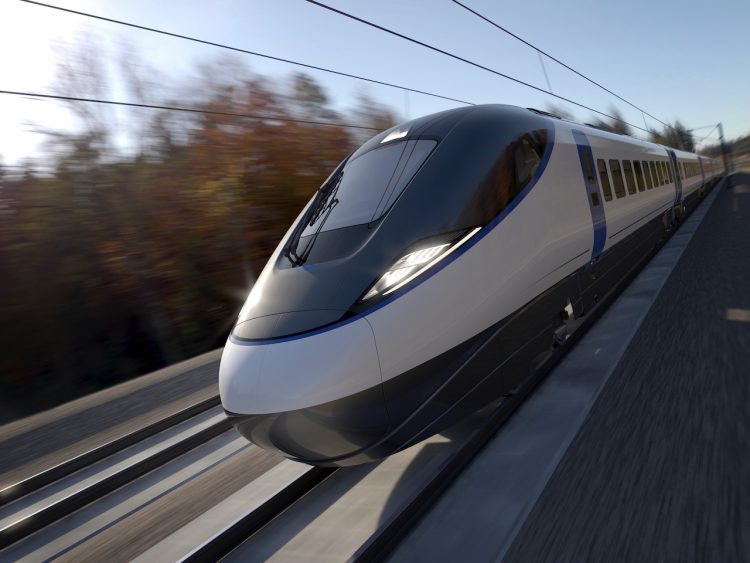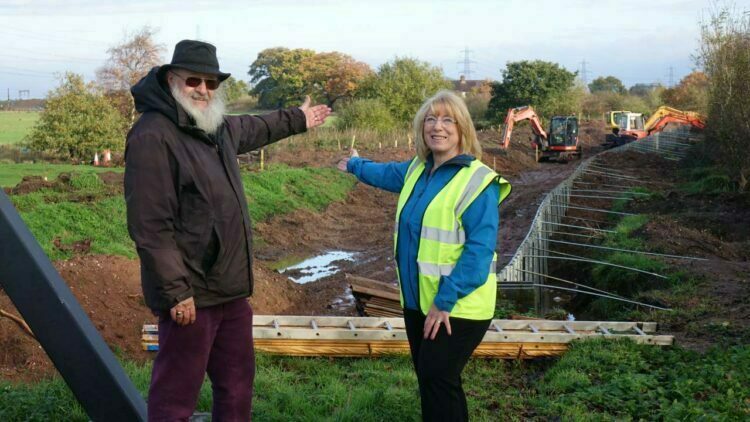A 120-metre section of Lichfield Canal has been restored, using a £75,000 grant from HS2‘s Community and Environment Fund.
Lichfield and Hatherton Canals Restoration Trust (LHCRT) started restoring the canal in 1996, with the aim of creating a ‘green and blue corridor’ connecting the local community with the national canal network.
The funding from HS2 has enabled the Trust to build a new section of canal, which includes ducts for electric boats which will help reduce the carbon output from diesel boats.
The new section enhances habitats around the Darnford Brook wetlands, including restoring existing woodland and hedgerows. The wetland area, now filled with water, is establishing itself as a habitat for diverse local wildlife, and will include a public nature trail alongside the towpath.

The restored part of the canal is close to where the HS2 railway will pass over it, and also close to where HS2 will pass under the West Coast Main Line. In August, HS2 completed work to drive a giant 6,200 tonne bridge structure into place under the railway at Fulfen Wood.
HS2 has been the target of widespread criticism for the negative impact of the project on the environment. It hopes that its Community and Environment Fund (CEF) will address this by providing funding additional to the monies that it has to spend mitigating damage and compensating communities along the HS2 route. Organisations that can demonstrate that the construction of HS2 has disrupted them can apply for grants from the fund.
The funding schemes will provide up to £40m during the construction timeline of HS2, which will support community-led projects to improve the environment, for example tree planting and energy efficiency measures. Funds will also support initiatives that benefit local communities, such as providing community facilities or supporting local heritage and culture.

Carol Mills, Chair of LHCRT, said: “We are so grateful to HS2 for the CEF funding. It kickstarted our work at Darnford Moors Ecology Park with phase one of the project creating water and other new habitats on land running alongside the canal. This initiated a chain reaction to enable us to secure further funding for the other phases. We’re close to completing the project and will officially open the ecology park in the coming months, which will be an attractive green and blue space for local people to enjoy.”
David Prys-Jones, HS2’s Biodiversity Manager, said: “HS2’s green corridor programme aims to establish a series of connected habitats stretching along HS2’s line of route to benefit nature as well as local communities. LHCRT’s canal restoration is a brilliant project because in combines the two.
“Canals are really important habitats that provide homes for fish, invertebrates and other key species of plants and animals while remaining great places for local people and leisure.”
Cathy Elliot, Independent Chair of the HS2 Funds, said: “It’s great to see LCHRT’s vision for a completed waterway take one step closer, and I’m glad that we could play a small part in helping to fund the scheme. Over the next few years, I’m sure we will see the area become a true wildlife haven that will be embraced by members of the public.
“HS2 will cross multiple waterways between London and the West Midlands, and I would encourage similar community-led organisations to get contact with Groundwork UK to explore the tangible benefits that the Fund offers.”






Responses
“when this is north of Birmingham and is affected by the HS2 cancellation.”
No, it isn’t. This part will still be built. Check the maps.